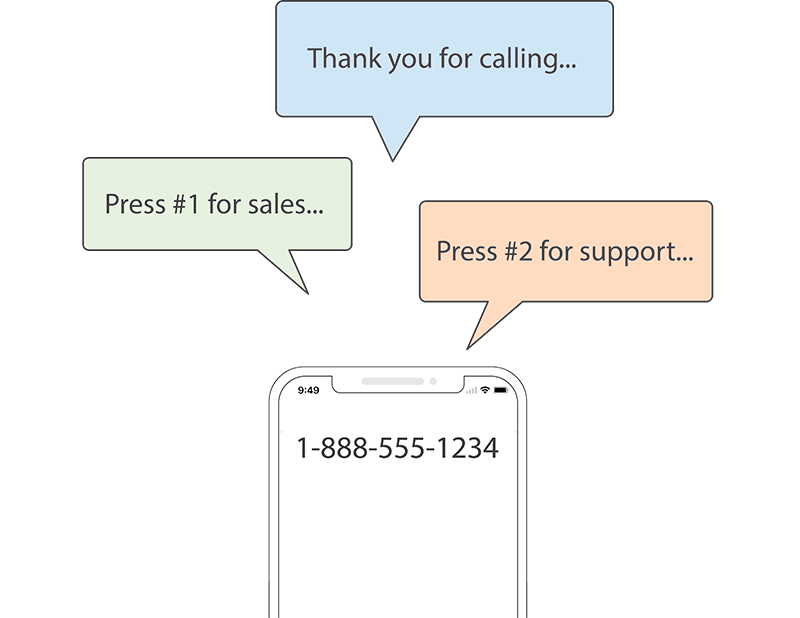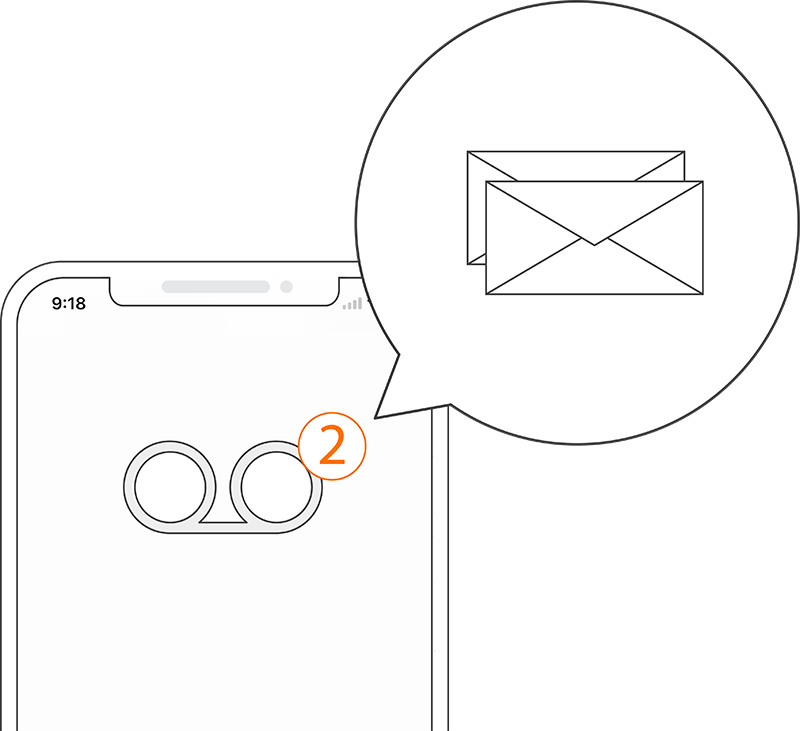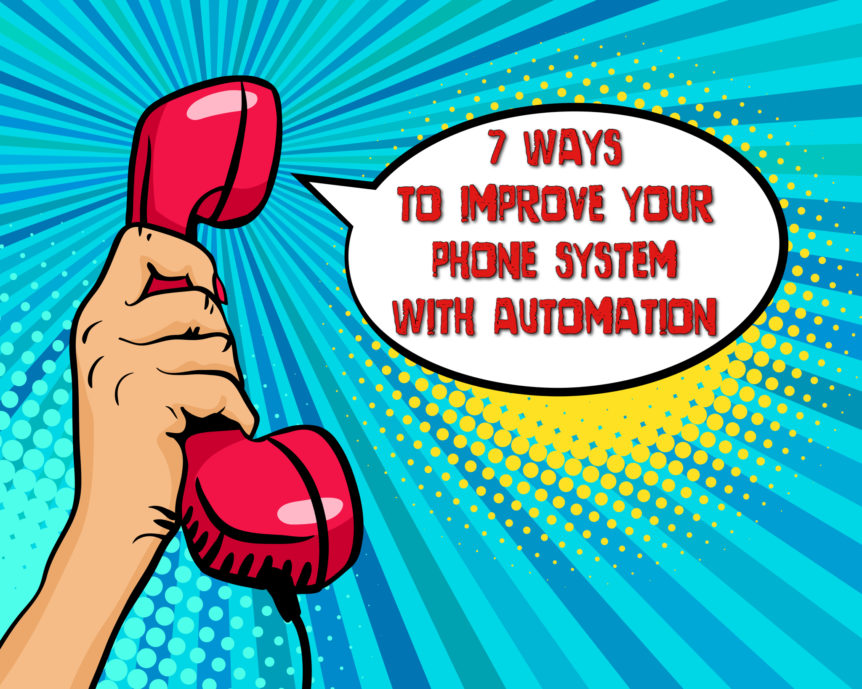Automation for phone systems was one of the most important things that was ever created for businesses. It’s honestly kind of crazy not to take advantage of automation for managing your business calls because it does nothing but add value for you, across the board.
It saves time, saves labor, gives the caller a better experience, and prevents you from losing sales due to confused or frustrated callers. There are a variety of ways that automation can enable your phone system to function better, and here are a few of those benefits.
![]()
1. Create a Company Directory
Even if you only have a small number of employees, adding a company directory allows you to professionally direct callers to the right person, right away. With a directory, there is no need for them to speak to a representative before they can be transferred to the right person because you can eliminate that step by letting them connect to that person on their own.
When someone calls in, they can simply dial the extension that corresponds with the correct person or department, without ever speaking to a live agent. So, what you do is add extensions for each of your employees or depts, which are linked to the correct forwarding phones for each one.
Then, create an audio message that contains the full list and attach that audio message to menu option of your choice. When the caller selects, “#1”, for example (or whatever number you designate), they will immediately hear the company directory audio message that you created. As soon as they hear the extension that corresponds with the person they need, they can dial it at any time.
This is especially effective and very helpful for your callers when you have more than a few employees, in which case you can even create a dial-by-name directory to make it easier for callers to find the person they’re looking for.

2. Give Callers Options By Using a Call Menu
A call menu (i.e., auto attendant, phone tree) is one of the most useful tools for automation and has been for quite a while. If you haven’t used this technology for your business before, then you’re missing out on one of the greatest ways to efficiently manage and route your calls.
There is a misconception that a call menu is only for large businesses with a ton of volume, but no business is too small to use this. No matter what size business you have, a call menu can save you a lot of hassle, and if nothing else, it instantly makes you sound more professional when customers call you.
Essentially, it’s a virtual receptionist; so, you can actually use the menu to replace a live person that answers all of your calls because it will automatically do most of what that receptionist would do.
The automated menu can greet the caller, direct them to the person or department that they need, or even let them select an option just to hear information, such as driving directions, hours, or other quick information. The best thing about it is that the menu screens calls for you, in many cases without any need to speak to a live person.

3. Create a Menu Option for Voicemail Only
When using a call menu, you can create an individual menu option that the caller can select to be sent directly to a voice mailbox. Of course, menu options are versatile and can be used to route callers to any destination you want, and this includes routing to voicemail.
This works as a nice addition to your menu because it eliminates the need to answer a call from someone who just needs to reach a specific person’s mailbox. Also, since they can just press a number and connect immediately to voicemail, that means the caller doesn’t have to wait for it to ring for awhile before being transferred to voicemail.
If needed, you can also create multiple menu options that each send to different mailboxes that correspond to different, individual employees.

4. Menu Options that Route to Specific Forwarding Phones
Pretty much a standard feature of a call menu is the ability to forward calls, when someone selects a given option, to any phone(s) that you want. You can decide which of the options on your menu sends to which phones, and all options do not need to ring all of your phones when a caller selects them.
If you have options 1 through 3 on your call menu, for example, you simply choose which phones will ring when a caller presses one of those numbers on their dial pad. It will then only ring the phones that you have set for each option. So, it might look something like this:

5. Scheduled Forwarding
Scheduled forwarding is an extremely useful method for businesses to organize custom scheduling for call management. This feature is exclusive to Talkroute virtual phone service, and you won’t find automation as high-functioning as this with any other virtual provider. You can basically create custom call forwarding schedules for each of your phones to make sure the right people are on the call schedule at the correct time and avoid any overlap.
This is great for automating shift changes within your company, or accommodating various employees who work on different days of the week. Once the forwarding schedule is set for a phone, that phone will then only ring during the hours and days of the week for which you have it scheduled.

6. Email Notifications for Messages
You may be thinking, “I already have enough notifications in my life…,” but these are notifications for your business that you’re going to want. Email notifications for business messages are important because you might not have a moment at any given time to check your messages, or you happen to miss a message come through on your phone.
The primary use for these email notifications is for voicemail. Set up your account to send new voicemail messages to a specific email address, select any email address that you want (not just the account holder), and get a ping from your email the moment a customer leaves a voicemail for you.
You can even set up multiple mailboxes on your account for different employees, and then set each mailbox to route to that person’s email. In addition to voicemail, you can also get notified each time a new text message comes in from a customer (if you’re using business text messaging).
Set only one email address to receive new text notifications, or you can set multiple email addresses if needed, to make sure that someone on your team is sure to respond.

7. Hours of Operation
When using a virtual phone system, it’s good to have business hours set to make sure that your phones can’t ring any time of the day. If you set your business hours for 8am to 6pm, for example, then calls will only ring your forwarding phones during those hours.
That will ensure that any forwarding phones won’t be ringing at all hours of the night, unless of course, you want to be open 24 hours a day. To illustrate how your hours of operation would work with a virtual phone system, compare it to business hours for any store in a brick-and-mortar building.
In the same way that a regular store locks its doors at a certain hour, and stops answering the phones, that’s exactly how the hours of operation feature works with your virtual system. When people call your business after your normal business hours, you can set an after-hours audio message and give them the option to leave a voicemail.
You may have been getting by with only a cell phone, a landline, or a couple of desk phones to run your business, and even though that can work when you’re a new business, adding some automation with a virtual phone system can bring you up to a more professional level.
It might not be necessary for you to add all of these features to your phone system, but at the very least, to automate your call management even a little will create a much better experience for your callers. And that’s the whole goal of these automations, to improve the experience of customers who are trying to reach you, as well as your experience of handling those calls.

Stephanie
Stephanie is the Marketing Director at Talkroute and has been featured in Forbes, Inc, and Entrepreneur as a leading authority on business and telecommunications.
Stephanie is also the chief editor and contributing author for the Talkroute blog helping more than 200k entrepreneurs to start, run, and grow their businesses.




